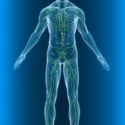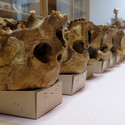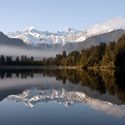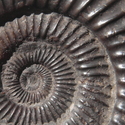In this activity, students date fossils from one site by matching them to fossils already dated somewhere else. They use real data from Mangahouanga, made famous by paleontologist Joan Wiffen.
By the end of this activity, students should be able to:
- understand how the age of fossils in one rock can be obtained using dates from fossils in a different place
- understand that most fossils can only be dated to a time range, not a precise date
- realise that microscopic fossils can be as important as big ones
- read information from scientific charts and share their results with others.
Download the Word file (see link below) for:
- introduction/background notes
- what you need
- what to do
- student worksheets.
Related content
The article Date a dinosaur and the video clip Cretaceous creatures look at the fossils at Mangahouanga and how they have been dated.
Activity idea
Fossil correlation is one method of absolute dating. This interactive explains four methods of absolute dating.





